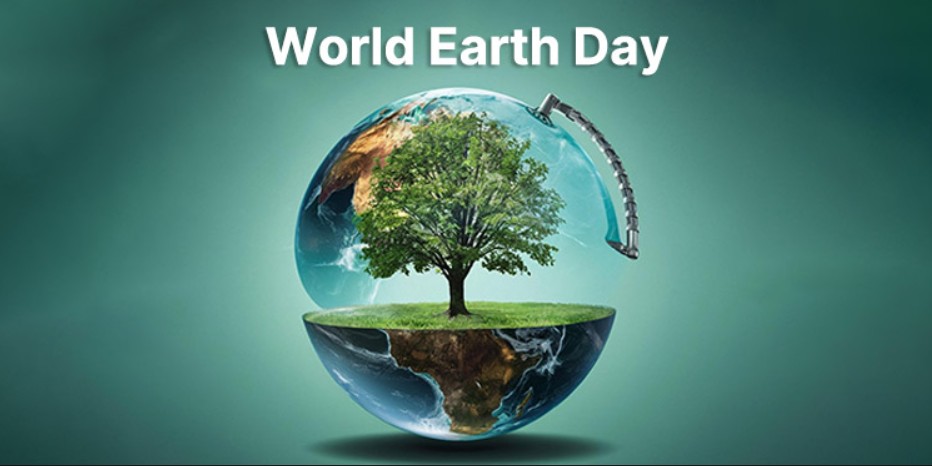
Why World Earth Day 2025 Is a Turning Point for India
World Earth Day 2025 arrives at a crucial time for India. The focus key phrase, World Earth Day 2025, appears here to emphasize the global and national importance of this day. Every year on April 22, millions across India join a worldwide movement to protect our planet. This year’s theme, “Our Power, Our Planet,” challenges India to accelerate its green revolution while addressing pressing environmental challenges. Can India balance rapid economic growth with ecological sustainability? How will government policies, technology, and citizen action shape India’s future? This blog explores these questions and more, focusing on India’s unique journey and urgent needs.
The History and Significance of World Earth Day 2025 in India
World Earth Day began in 1970 as a grassroots movement in the United States. It quickly spread worldwide, inspiring millions to demand environmental protection. In India, Earth Day gained prominence in the 1990s amid rising pollution and deforestation. Since then, it has become a platform for awareness, education, and action.
India’s environmental journey is complex. The 1984 Bhopal Gas Tragedy highlighted industrial risks, sparking stronger laws and public vigilance. Today, World Earth Day 2025 serves as a reminder of how far India has come and how far it must go. The country faces challenges like air pollution, plastic waste, and climate change impacts, but also opportunities in renewable energy and sustainable development.
India’s Clean Energy Revolution: Powering the Planet
India’s clean energy transition is a cornerstone of its green revolution. As of early 2025, India has installed over 156 GW of renewable energy capacity, with solar and wind leading the way. This surge is part of India’s commitment to achieve net-zero carbon emissions by 2070. The government’s ambitious target to reach 500 GW of non-fossil fuel capacity by 2030 reflects this vision.
Government policy reforms are crucial. The Green Hydrogen Mission, fossil fuel subsidy cuts, and smart grid investments are transforming India’s energy landscape. For example, the Ministry of New and Renewable Energy increased funding by 20% in 2024-25 to support solar manufacturing and grid modernization. These efforts align with the World Earth Day 2025 theme, highlighting India’s power to influence the planet’s future.
Tackling Plastic Pollution: Earth Day Campaigns and Policy Actions
Plastic pollution remains a major environmental threat in India. Despite bans on single-use plastics in many states, enforcement challenges persist. India generates over 3.5 million tonnes of plastic waste annually, much of which ends up in rivers and oceans, worsening floods and harming biodiversity.
On World Earth Day 2025, community cleanups, school drives, and corporate campaigns spotlight this crisis. Government initiatives like the Plastic Waste Management Rules 2023 aim to reduce plastic use and improve recycling. Citizens, especially youth and women, play a vital role in these efforts. Their collective action embodies the spirit of “Our Power, Our Planet.”
Climate Change and Biodiversity: India’s Vulnerabilities and Adaptation
India is one of the most climate-vulnerable countries globally. In 2024 alone, extreme weather events damaged cropland on over 3.2 million hectares, threatening food security. Rising temperatures, erratic monsoons, and expanding deserts endanger millions.
Biodiversity hotspots like the Western Ghats and Sundarbans are under stress. Conservation efforts, including expanding protected areas and wetland restoration, are underway. The government’s “Ek Ped Maa Ke Naam” campaign encourages sustainable tree planting nationwide. These actions reflect India’s commitment to climate adaptation, a key focus on World Earth Day 2025.
The Power of Collective Action: Citizens, Schools, and Businesses
India’s environmental progress depends on collective action. Youth-led movements, women’s groups, and NGOs have driven landmark campaigns like the Chipko movement and Narmada Bachao Andolan. Today, schools integrate environmental education, and businesses adopt ESG (Environmental, Social, Governance) standards.
Corporate India is increasingly investing in green technologies and sustainable practices. However, only 30% of companies meet global ESG benchmarks. The government encourages green finance and green industrialization through policy incentives. This collective momentum is vital for India to meet its World Earth Day 2025 goals.
Technology and Innovation: Driving India’s Green Transition
Technology plays a pivotal role in India’s green revolution. Solar manufacturing hubs in Gujarat and Tamil Nadu produce panels at competitive costs. Wind energy projects expand in coastal states. Emerging technologies like carbon capture and water recycling are gaining attention.
Smart grid investments modernize electricity distribution, improving efficiency and reducing losses. The Green Hydrogen Mission leverages cutting-edge tech to produce clean fuel. Despite progress, challenges remain in scaling innovations and securing skilled manpower. Continued investment and policy support are essential.
Traditional Environmental Practices: Ancient Wisdom Meets Modern Needs
India’s ancient environmental wisdom offers sustainable solutions. Practices like rainwater harvesting, sacred groves, and organic farming have sustained communities for centuries. These traditions align closely with Earth Day’s values.
The government promotes natural farming and seed conservation, integrating tradition with innovation. NGOs restore sacred forests and revive indigenous knowledge. This blend can help India meet its environmental goals while preserving cultural heritage.
Balancing Economic Growth and Ecological Sustainability
India’s rapid economic growth often strains natural resources. However, the 2025 Union Budget reflects a shift toward sustainable development. Increased funding for green infrastructure, renewable energy, and climate resilience signals a new direction.
Financing India’s green transition requires $10 trillion by 2070. Instruments like climate resilience bonds and carbon markets can mobilize capital. The government must ensure policies support inclusive growth without compromising ecological health.
Women and Youth: India’s Environmental Champions
Women and youth are at the forefront of India’s environmental movement. Historically, women led forest conservation and water management efforts. Today, they drive climate advocacy and sustainable livelihoods.
Youth awareness and activism have surged, with schools integrating environmental education and organizing campaigns. Empowering these groups is critical for India’s sustainable future and aligns with the spirit of World Earth Day 2025.
Key Environmental Statistics for India (2024-25)
| Indicator | Data |
|---|---|
| Renewable energy capacity | 156.25 GW |
| Non-fossil electricity share | 46.52% |
| Plastic waste generated annually | 3.4 million tonnes |
| Cropland damaged by climate | 3.2 million hectares |
| Extreme weather days (2024) | 255 out of 274 days |
| Women/youth environmental leaders | Increasing participation |
Holistic Changes Needed to Protect India’s Interests
India must act decisively to safeguard its environment and economy. Key actions include:
- Accelerating fossil fuel subsidy cuts and boosting renewable energy investments.
- Enforcing plastic bans and improving waste management.
- Scaling climate finance through green bonds and carbon markets.
- Integrating traditional practices with modern technology.
- Empowering women and youth as environmental leaders.
- Ensuring economic growth aligns with ecological sustainability.
The government should strengthen policy implementation, increase funding for research, and foster public-private partnerships. These steps will protect India’s interests without compromising development.
Conclusion: Your Role in World Earth Day 2025 and Beyond
World Earth Day 2025 is a call to action for every Indian. The focus key phrase appears here for the eighth time, reinforcing its importance. Will India lead the green revolution or fall behind? The answer depends on collective will—government, businesses, communities, and individuals.
Every action counts: plant trees, reduce plastic, support clean energy, and spread awareness. Together, we can create a sustainable India that honors its past and secures its future. So, what will you do this Earth Day?
Call to Action: Join the movement. Make every day Earth Day. Protect India’s planet, power, and people.
#WorldEarthDay2025, #GreenIndia, #CleanEnergyIndia, #ClimateActionIndia
